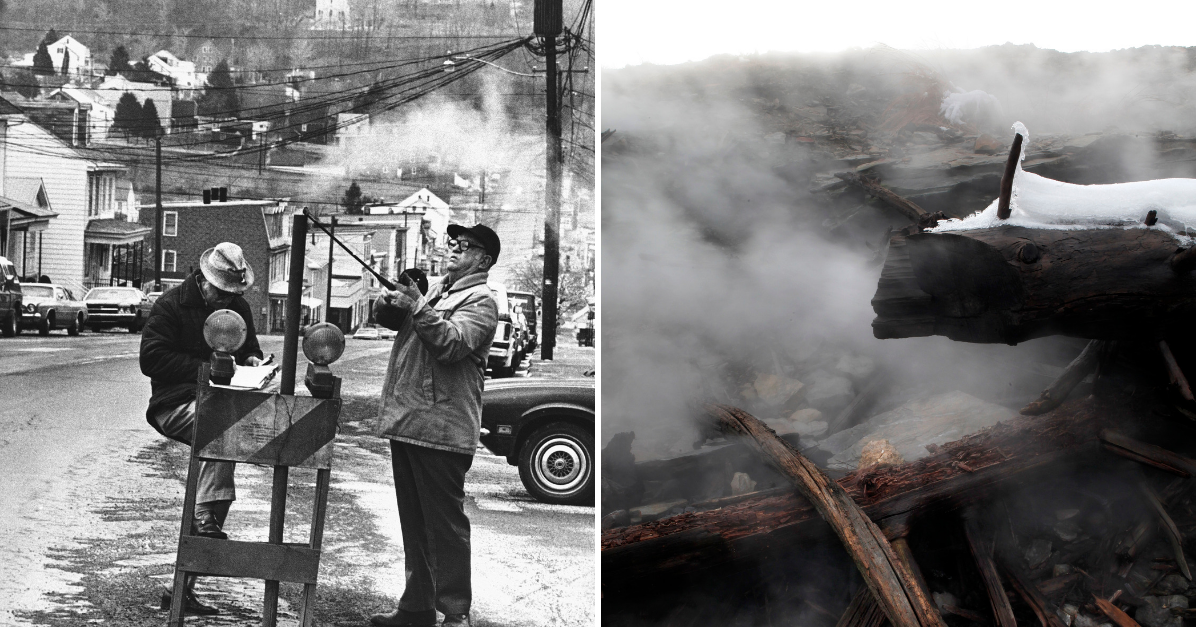In 1962, what is now know as the Centralia Mine Fire began. This story, while true, seems like one of those situations that’s obviously problematic from start to finish. I know, hindsight is 20/20. But, really, in all honesty, this whole situation was probably avoidable. I truly am speechless. At first it seems like a mistake, now it just seems reckless. See for yourself.
Videos by Rare
One of the first things to know about Centralia, is that it’s a borough. I think this small, often overlooked fact plays a big role in the occurrences. The town is located in Columbia County Pennsylvania, United States. It’s one of the smallest townships in the state of Pennsylvania and it happens to sit on some of the world’s largest coal deposits. More precisely, three-fourths of the worlds anthracite coal is located in this tiny part of Pennsylvania.
Naturally, upon discovering this, tunnels were built underground to harvest the coal from the coal mines. Centralia was a mining town during the height of mining, somewhere around the 1850s. For years Centralia was an average mining town, with nothing out of the ordinary happening. Not even in the 1960s when the demand for coal was all but gone, coal mining companies were shutting down and underground mines were being abandoned. Even then, life continued as normal in Centralia.
How did the Centralia Mine Fire start?
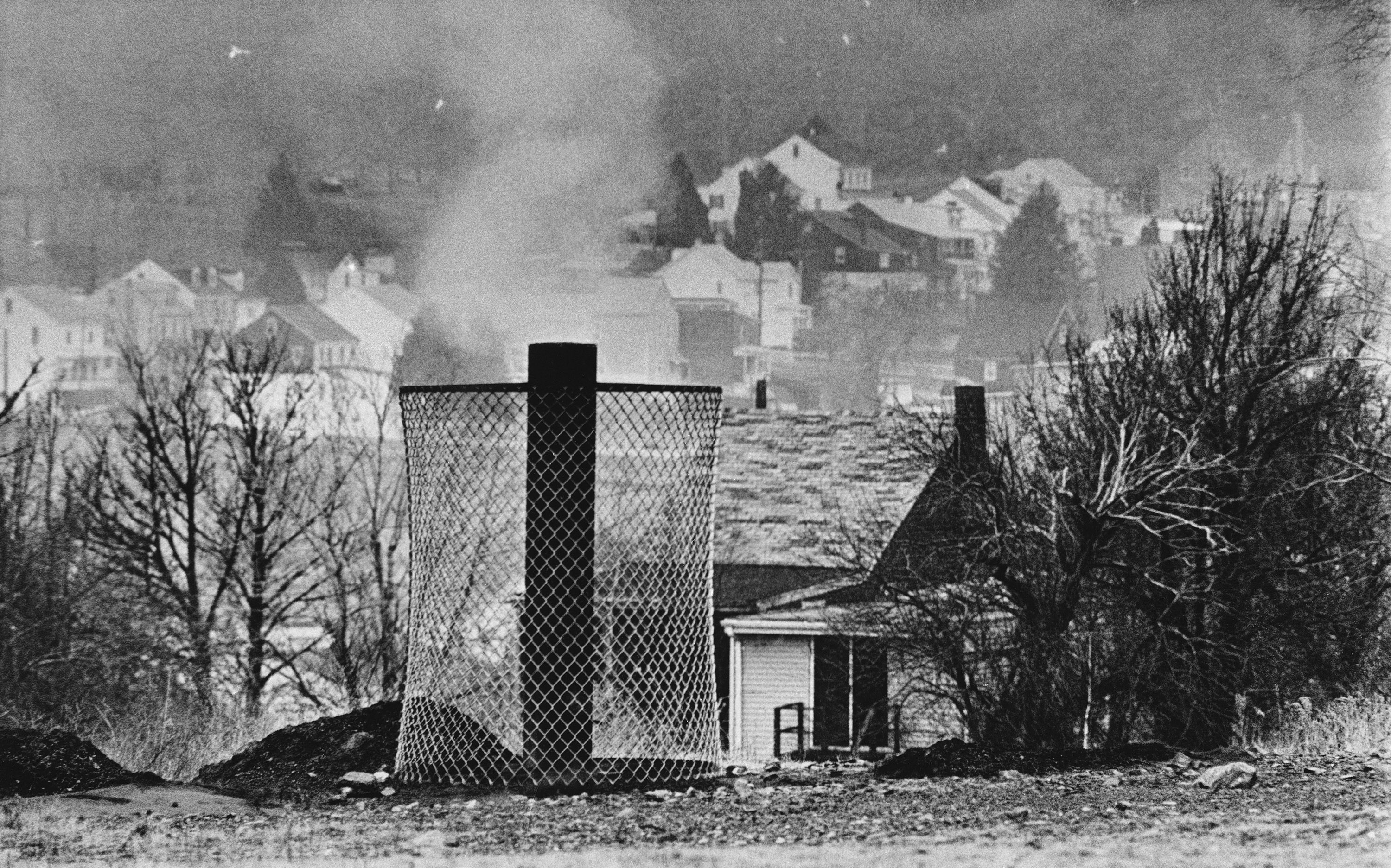
1962 is when things started to heat up. Apparently Centralia was having a bit of an “illegal dumping” situation. In their 0.24-square-mile town, there were eight separate dumping sites, which was becoming a problem. Early in the year, Centralia City Council proposed the use of an empty strip mine as the new landfill to prevent the use of multiple dumping sites. A few months later, they decided to clean the new strip mine landfill in preparation for the upcoming Memorial Day holiday.
This is about as far as the story goes before all the “hearsay” and vagueness kicks in.
Allegedly, cleaning the landfills prior to Memorial Day had been done multiple times within recent years. “Cleaning” consisted of the volunteer fire department setting the trash in the dumps on fire. Maybe Centralia, having some municipal freedoms, was exempt from Pennsylvania’s laws against dump fires. Maybe they were just breaking the law. Regardless, the (illegal) burning of trash was already happening. Luckily, no real damages had occurred from it at this point.
What caused the Centralia Mine Fire?
https://www.youtube.com/watch?time_continue=5&v=fsgqy5FYP2c
The new landfill, however, was on an old strip mine. This was cautioned against in a 1956 Pennsylvania legislation because, in order to use a strip mine as a landfill, specific regulations needed to be followed. Because they were known to start mine fires.
On May 27 1962, five volunteer firefighters showed up to the landfill at the request of the town council and set it ablaze. In a pretty predictable manner, the fire spread underground to the abandoned mining tunnels, but nobody realized it.
They did, however, find it a little “strange” that visible flames were popping up in the area near the landfill many days post setting the fire. Multiple attempts to ensure the fire was extinguished exposed a 15-foot hole, deep in the strip mine. The hole had been blocked by garbage, so no one knew it was there. This hole, of course, connected to abandoned mining tunnels underground. And the coals were catching fire.
When this underground coal mine fire initially started, it wasn’t seen as a threat. Some residents found it amusing, even. The approximate thousand residents figured that since the fire was beneath the city, in the tunnels, it wouldn’t effect the surface. They probably assumed that the burning coal would just stop burning at some point. It had to, right?
Unfortunately, the residents of Centralia were wrong. Coal burns very slowly and for a long time. The simple combination of oxygen + carbon = a coal fire. In this case, the air coming from outside the tunnels, the carbon found in coal, and the mass quantity of carbon in multiple abandoned coal mines was keeping the underground fire alive. The fire spread almost as soon as it began. There was essentially no putting it out. Centralia tried, but the coal kept burning.
Symptoms of the fire appeared pretty immediately. Visible flames and smoke appearing on top of the ground around the town. In other parts, the ground became weak and separated in some areas. Carbon monoxide was also present. Once it was obvious that the underground coal fire was real and spreading, the town of Centralia swiftly sent a letter to the LCVV (Lehigh Valley Coal Company) to alert them and ask for help. The letter was backdated and stated that “a fire of an unknown origin started during a period of unusually hot weather”.
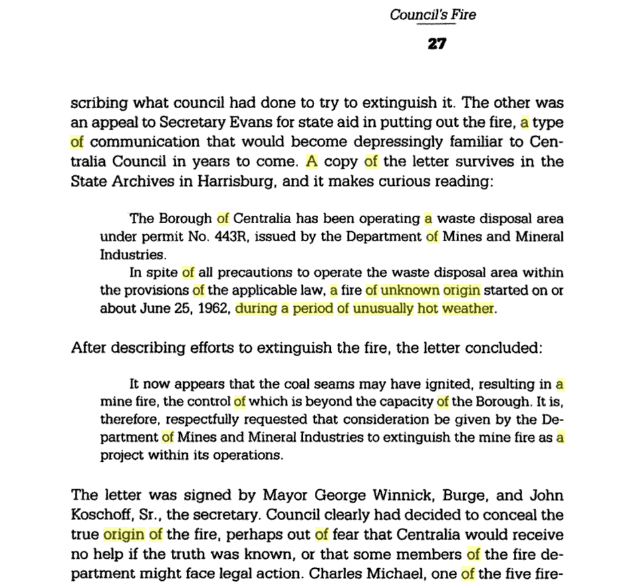
The mysterious combustion story worked. By August, a plan was in place with the help of United Mine Works of America to put out the fire. The project ran until the $20,000 ($167,500 in 2019 money) budget fizzled out in October. A second effort to put out the fire involving mixing water and rock to flush out the fire began in November. This plan, also, ultimately failed shortly after it began. Another effort was proposed in 1963, but after learning it would cost upwards of two hundred thousand dollars, the city gave up.
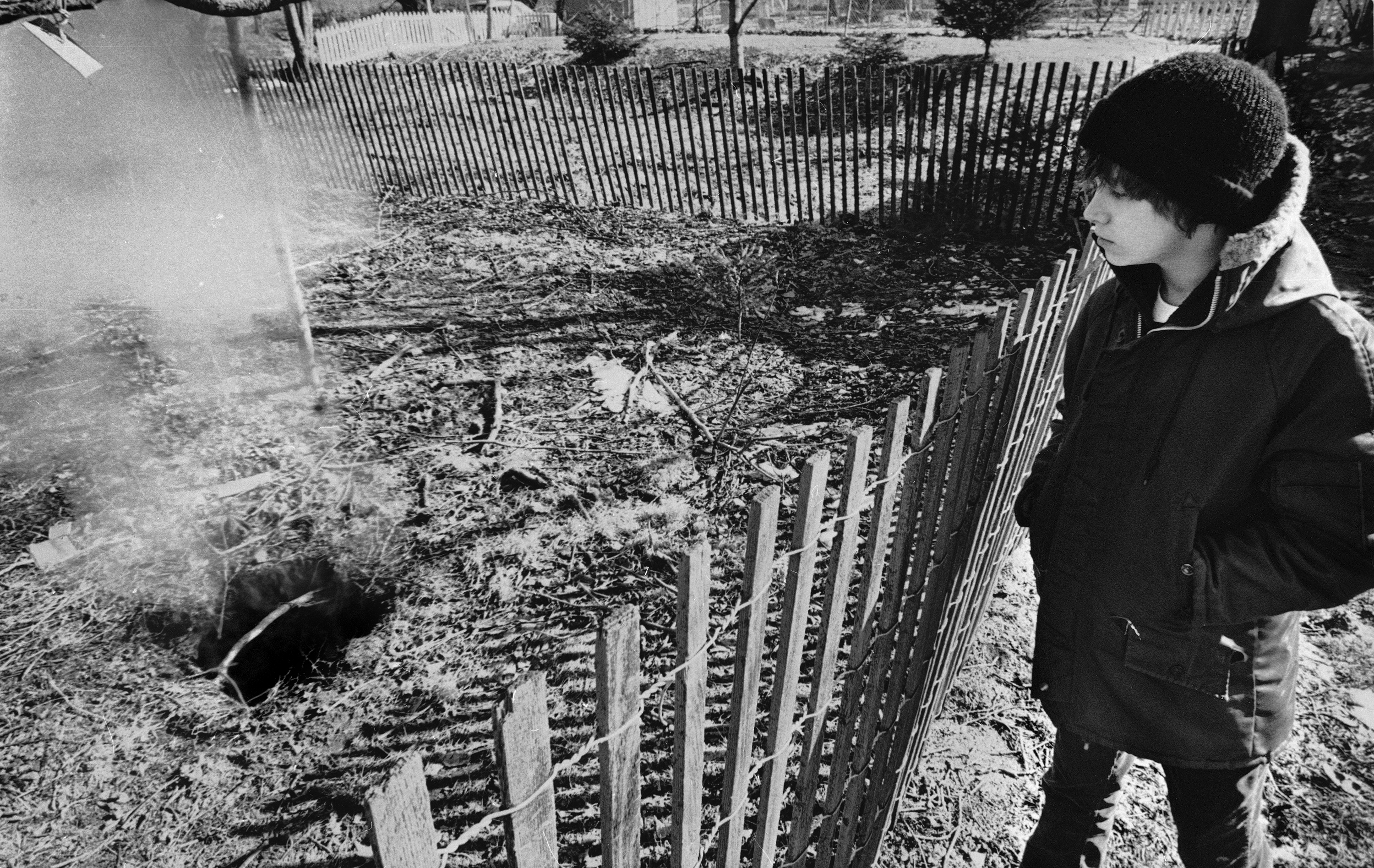
The situation continued to escalate in dramatic bounds. In 1970, when the mayor/gas station owner checked his fuel levels with a dipstick, he found that the gasoline in the tank was 172 degrees Fahrenheit! Shortly after, illnesses related to carbon monoxide, sulfur and carbon dioxide in the air were reported. By the time 12 year old Todd Domboski, seen above, fell into a sinkhole in a neighbors lawn and had to cling to a tree root for his life, the state of Pennsylvania and Congress knew the situation had gone too far.
Is it still burning and when will the Centralia Mine Fire burn out?
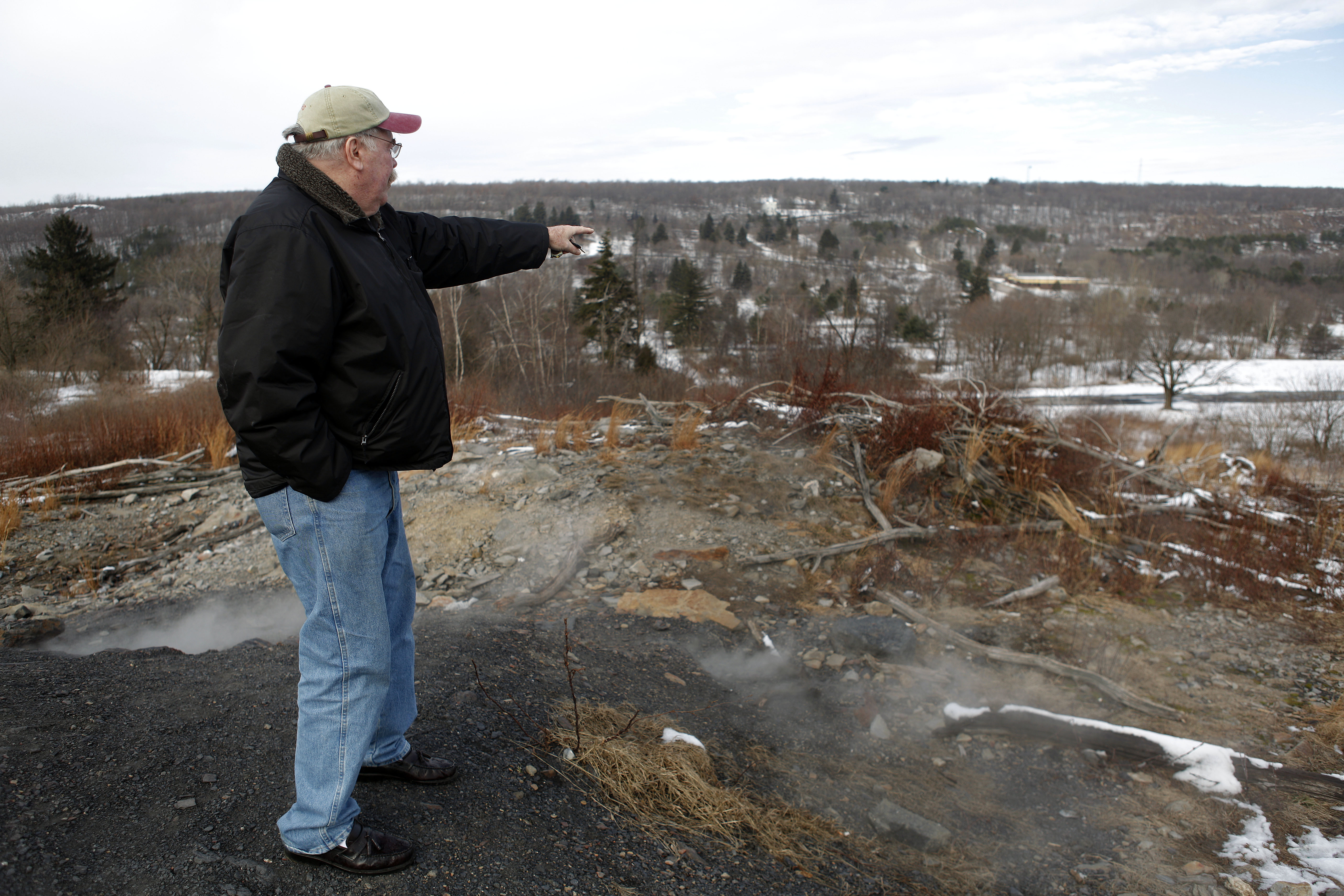
The United States Congress stepped in, offering buyouts to the residents and spending over $42 million dollars to relocate the towns inhabitants.
In 1992 Pennsylvania governor Bob Casey condemned the city, invoking eminent domain on all properties. By now, most buildings have been demolished, a handful of homes and a church remain. A risky fewer than 10 people live here presently. They remain as a result of an agreement with the state allowing them to stay in their homes for the duration of their lives, but afterwards, the land falls under the eminent domain ruling.
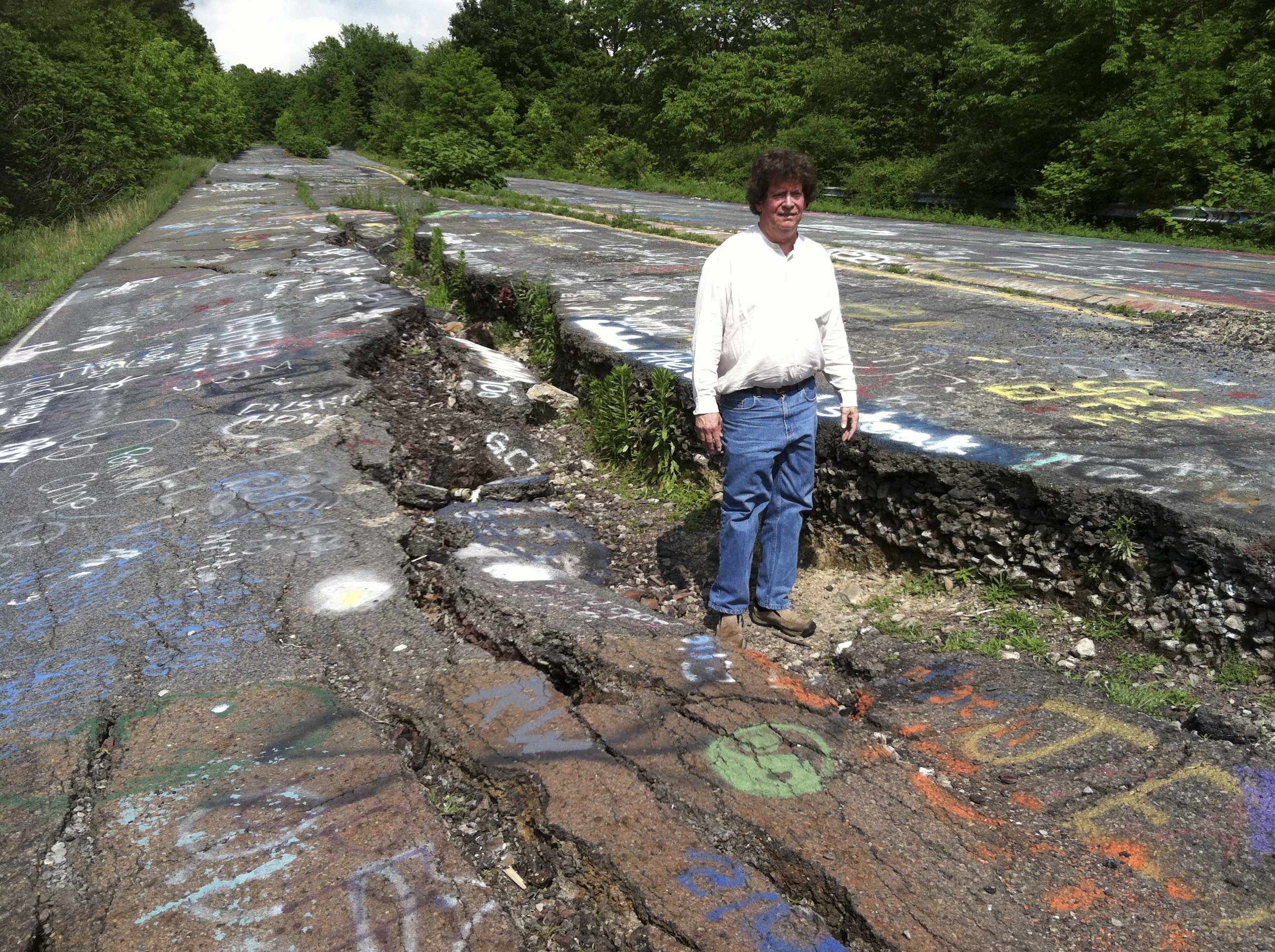
While the fire does still burn, most of the above ground flames and smoke is gone. On some cold days smoke can still be seen seeping upwards. The fire now covers 6 square miles in 3 different directions, runs 300 feet deep and grows over 70 feet per year. The town has become yet another ghost town, even its zip code was removed. The only thing to see now is a collapsed stretch of highway a mile south of town, Route 61, that has become a tourist attraction. “Graffiti Highway” is this part of Route 61’s new name.
Can we all agree here that these people pretty much just set their town on fire and hoped for the best? I can’t decide if it was an accident, the best intentions gone awry, or if they just didn’t think it’d happen to them? Please vote.
This post was originally published on June 28, 2019.

